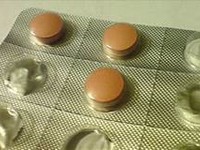Chloroquine
CLINICAL USE
DOSE IN NORMAL RENAL FUNCTION
PHARMACOKINETICS
DOSE IN RENAL IMPAIRMENT
GFR (mL/MIN)
DOSE IN PATIENTS UNDERGOING RENAL REPLACEMENT THERAPIES
IMPORTANT DRUG INTERACTIONS
Potentially hazardous interactions with other drugs
ADMINISTRATION
Reconstition
–
Route
Oral, IV, IM/SC in rare cases
Rate of Administration
IV infusion :
IV infusion
over 8 hours followed by 3 further 8 hour infusions containing 5 mg base/kg (total dose 25 mg base/kg over 32 hours)
